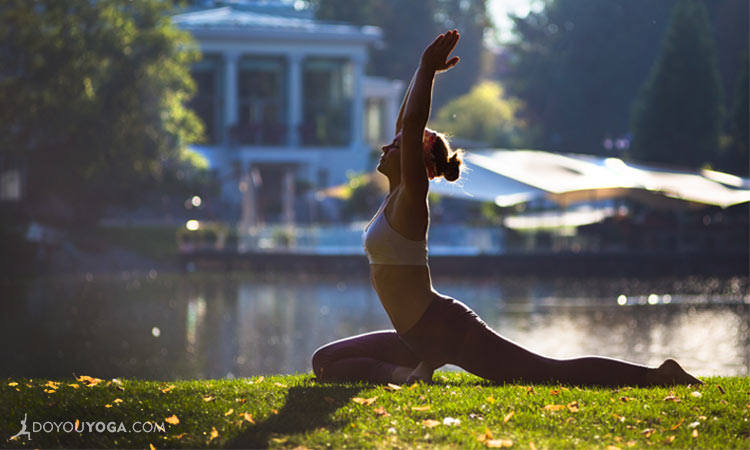“I know I can get my leg behind my head, I just have to pull it back a bit harder.” Yank. Snap. Ouch.
Many years ago when I first started practicing yoga, as well as wanting to get my leg behind my head(!), I was very keen for my front shin to be all the way parallel to the front of the mat in Pigeon. Why? Essentially, my Type A personality decided that was the goal.
I ignored every yoga teacher’s advice to work mindfully in this pose and I repeatedly tried to force my body to do something it wasn't ready for. It wasn't long before I started to feel quite a lot of pain in both my hips and my knees.
Thankfully, I was a little bit obsessed with my new hobby (yep, Type A…) and stayed after class to ask a teacher why I was experiencing pain in Pigeon. I was lovingly but firmly encouraged to approach both this pose and my practice in general with more awareness and more respect.
And to give my hips time to open without using force. I took his advice, and adapted my practice to suit my tight hips and unsurprisingly, the physical pain disappeared pretty quickly. It didn't take long however, for resistance of a different kind to pop up.
When Yoga Ruffles Our Internal Feathers
In my first six months practicing yoga, I could never understand why teachers liked to keep us in Pigeon for so long. I couldn't stand it. Okay, the pain in my hips and knees had gone, but all sorts of emotions like frustration, fear and insecurity started to come to the surface.
I felt restless as hell and couldn't wait for the cue to sail back to Downward Dog. Yes, it’s fair to say this pose was (rather appropriately) ruffling my internal feathers.
Like any decent hip-opening pose, Pigeon has the ability to release a whole pile of emotional tension, which is commonly stored in our hips. As the hips are so intrinsically linked to our lower chakras, they’re a common storehouse for unexpressed emotions like fear, insecurity, anger and frustration, or anything relating to our physical place in the world.
If we move house, travel a lot, end a relationship or start a new job, all of which I did when I first started practicing, chances are we’ll experience some degree of tension in the hip department. It’s easy to confuse that internal discomfort with pain but they are actually very different sensations.
Pain Does Not Equal Gain.
In a society where we’re led to believe that “no pain equals no gain,” it can be really easy to assume that we really need to feel something in a painful way for it to be having an affect. Yoga definitely bucks the trend here.
If you’re not already familiar with Ahimsa, the first of the Yamas (ethical guidelines) from Patanjalis Sutras, allow me to introduce you. Ahimsa is translated as non-harming, but perhaps you could look at it as taking care not to harm yourself or others.
In my earlier example of forcing my shin parallel in Pigeon, not practicing Ahimsa led to pain and injury, yet when I started to approach my practice from Ahimsa, I found a sense of freedom.
Persevere When It Comes To Releasing Uncomfortable Emotions.
Where physical pain is a sign to stop, emotional discomfort provides a valuable opportunity to let go of something that isn't serving you in a positive way. As uncomfortable as negative emotions are, we should not try to avoid or suppress them just because they rattle our cage.
As yogis, we have a veritable toolbox that we can call on to help us let go, like Asana, Yoga Nidra, and most forms of meditation. Though in my experience dealing with emotional discomfort both on and off the mat, I’ve found that conscious breath – breathing in positivity, joy, gratitude, or love, and breathing out anything unserving – is the simplest way to help clear the internal air.
Always respect your body, always respect your current abilities as well as your limitations, and never force yourself to do something physically painful—just because the mind says it wants to go further.


